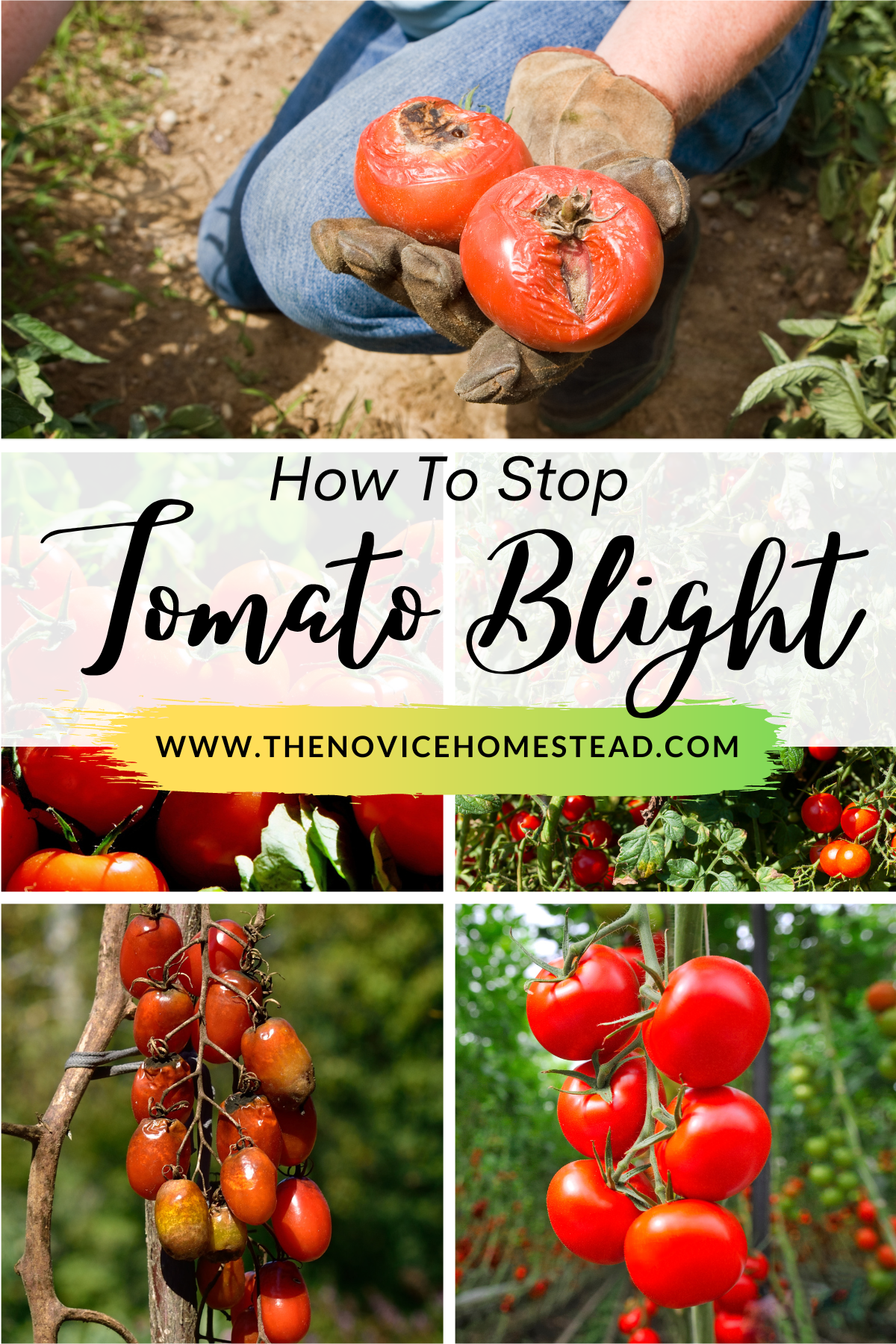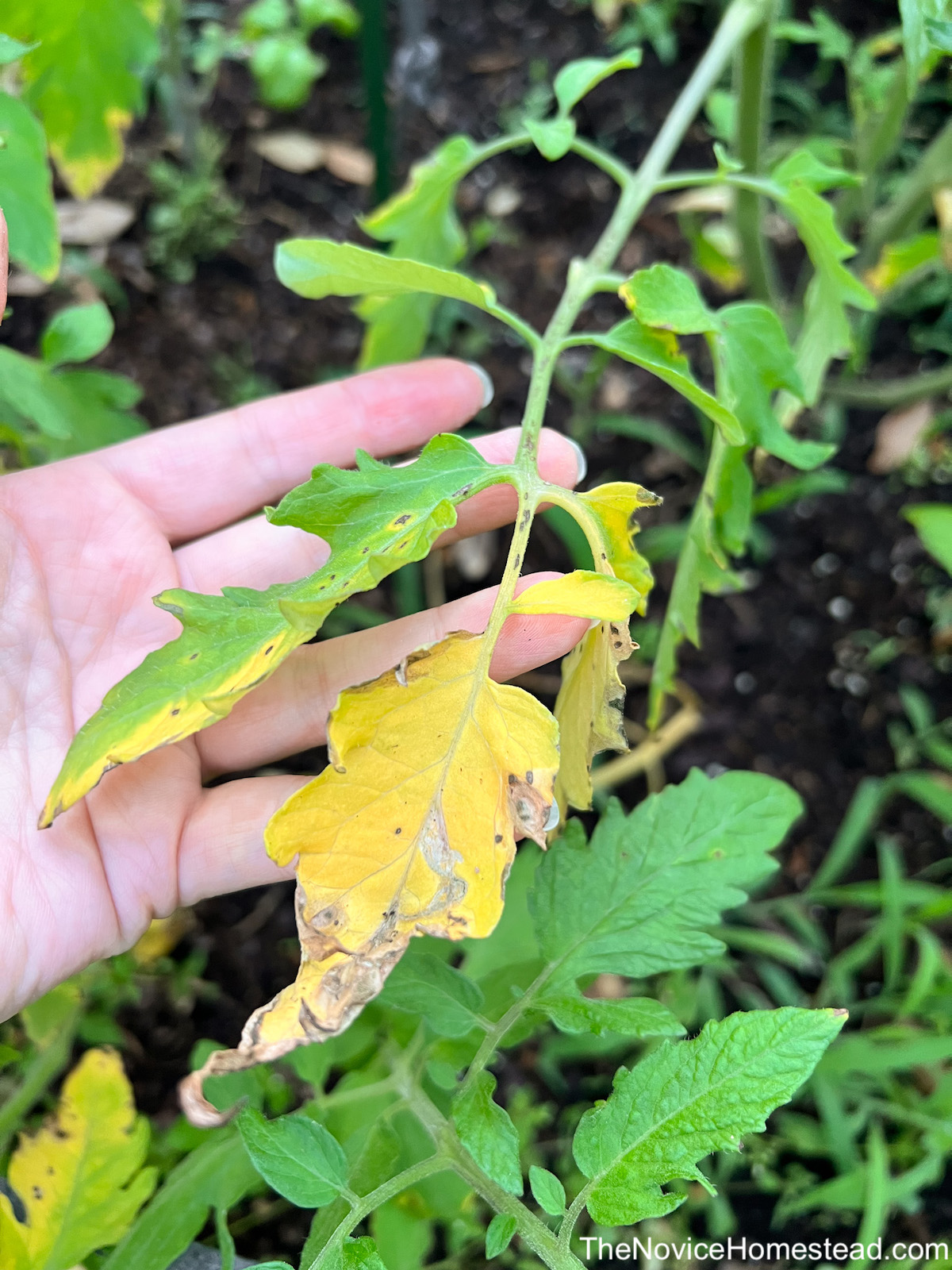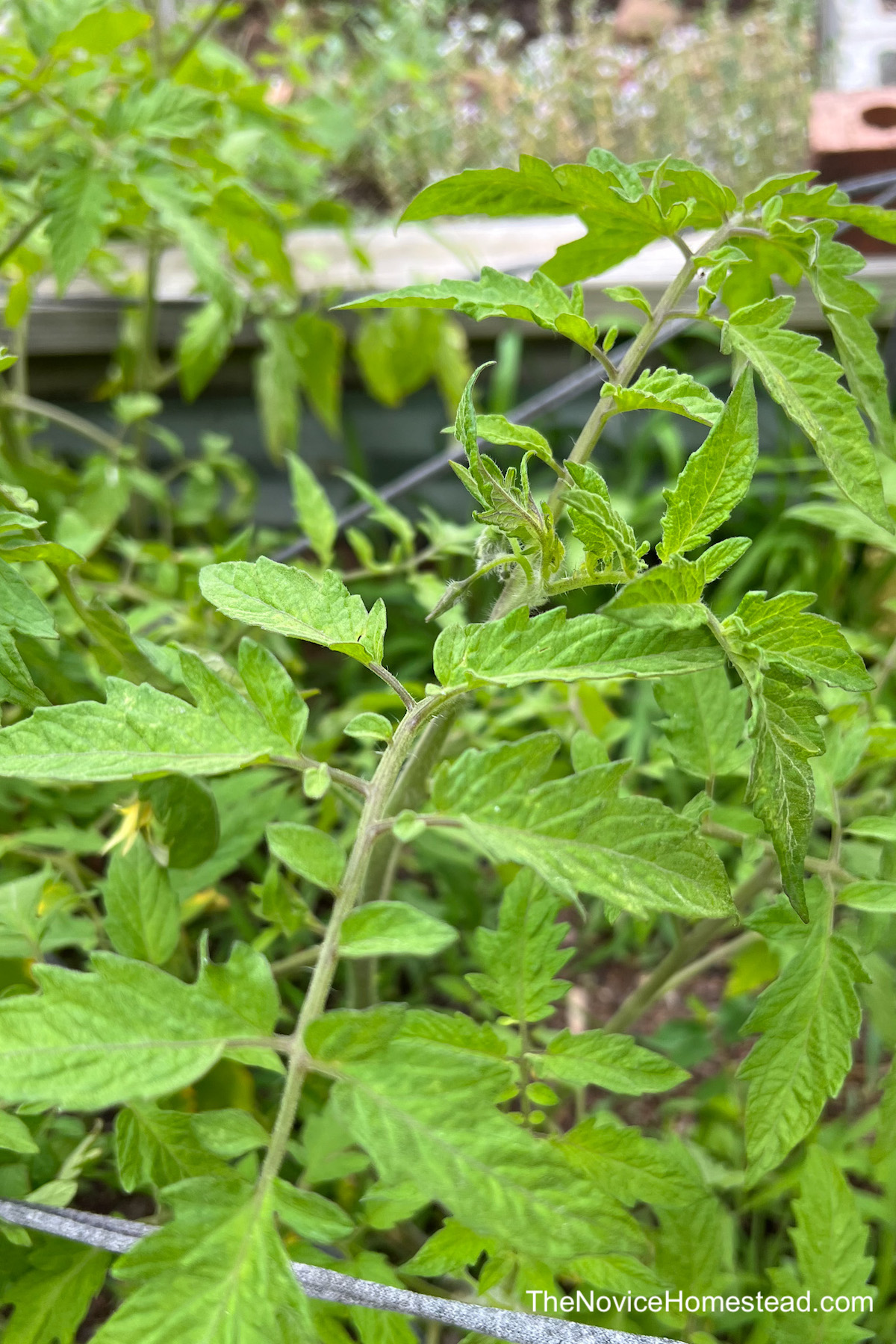Tomato blight is a fungal infection that can wreak havoc in your vegetable garden. Learn how to prevent and treat tomato blight with these simple steps.

What is Tomato Blight?
Tomato Blight is a fungal disease that affects tomato plants, stunting their growth and in some cases, ruining the plants entirely. It is caused by Phytophthora infestans, which is an oomycete, or water mold. Blight is common in hot, humid environments and can also affect potato plants.
Early signs of tomato blight include small, dark spots on leaves. As the infection progresses, the plant’s leaves may turn yellow and wilty. This usually starts with leaves near the base of the plant and spreads upward.
Advanced tomato blight will spread to the stems of the plant, turning them black in some areas. A plant with advanced disease will stop producing flowers and any existing fruit will not ripen any further.

How Do You Prevent Tomato Blight?
The best thing to do is to try to prevent tomato blight in the first place. There are a number of steps you can take to give your plants the best chance of living a disease-free life:
- Plant disease resistant varieties. There are many tomato varieties that are bred to be resistant to tomato blight. If you live in an area where tomato blight is common, choosing a disease resistant plant is the safest option.
- Rotate your crops. Tomato blight spores can survive in the soil even after the plants are gone. If you have spores present in the soil, they can affect next year’s crop. For this reason, it is best to avoid planting tomatoes in the same spot year after year, if at all possible. Either way, you want to remove old plants immediately at the end of the growing season. Leaving dead plants in place allows the spores to get into the soil.
- Water tomato plants at the base. When watering, try to avoid getting water on the leaves of your tomato plants or watering so that it splashes from the ground to the leaves. This will help to prevent the spores of tomato blight from spreading from plant to plant.
- Remove infected leaves. If you see any leaves on your tomato plants that you suspect may be infected with tomato blight, cut them away immediately. Diseased leaves left on the plant can bring down the overall health of the plant and make it easier for the disease to spread.
- Never plant tomatoes next to potatoes. Potatoes are also affected by blight and it can spread from potatoes to your tomato plants.
- Apply fungicide. If there are already signs of blight on your plants, you may want to try a fungicide. Keep reading for a homemade tomato blight treatment that is actually quite helpful.
How Can You Treat Tomato Blight?
Unfortunately, tomato blight is difficult to treat once it’s taken hold in your garden. But that doesn’t mean that you should give up!
As soon as you notice signs of blight, take action to prevent further spread. Trim any affected leaves or stems. Do not compost infected plants, but rather, burn them to get rid of the spores.
You can also try a commercial fungicide, but I have yet to find one that actually seems to work. However, I came across the following recipe from the USDA to make a homemade spray for infected plants, so I decided to give it a try!
DIY Tomato Blight Treatment
There are many commercial fungicide products out there, but the USDA actually recommends this homemade spray:
Time needed: 10 minutes.
How to make and use this homemade tomato blight spray:
- Gather Ingredients:
1 TB baking soda
1 tsp vegetable oil
A few drops of a mild dish soap
1 gallon of water - Mix:
Add everything to a large mixing bowl and stir until baking soda dissolves. Alternatively, you can halve the recipe and mix directly in a large spray bottle.
- To Use:
Pour treatment into a spray bottle. Apply generously to affect plants, avoiding flowers. Repeat weekly, or after a heavy rain.
Does it Work?
Before I applied the tomato blight treatment, I first pruned away all diseased leaves. Then I coated the plants in the spray, until dripping wet.
The day after the treatment, the plants looked droopy. I think they were probably weighed down a bit by the residue left behind from the spray.
Here are the plants a few days after one treatment:

The spray seemed to stop the blight from spreading as quickly. There were a few more leaves to remove, but overall, the plants looked quite healthy and green. They are flowering and starting to produce fruit.
I’ll keep using this spray over the rest of the season and report back on long-term results. But for now, this DIY tomato blight treatment looks like a winner!